Company Cyber Security Posture
NANA
NA Company Details
NA
NA
NA
NA
NA
NA
Scan still pending
NA
NA
Between 200 and 800
This score is AI-generated and less favored by cyber insurers, who prefer the TPRM score.
 NA Global Score
NA Global Score.png)

Company Scoring based on AI Models
| Model Name | Date | Description | Current Score Difference | Score |
|---|---|---|---|---|
| AVERAGE-Industry | 03-12-2025 | This score represents the average cybersecurity rating of companies already scanned within the same industry. It provides a benchmark to compare an individual company's security posture against its industry peers. | N/A | Between 200 and 800 |
Company Cyber Security News & History
| Entity | Type | Severity | Impact | Seen | Url ID | Details | View |
|---|
Company Subsidiaries

NA
Access Data Using Our API

Get company history
.png)
NA Cyber Security News
NSA and Others Publish Advisory Warning of Russian State-sponsored Cyber Campaign Targetin
A Russia state-sponsored cyber campaign targeting Western government organizations and commercial logistics entities, transportation services, and technology ...
Russian Hackers Exploit Email and VPN Vulnerabilities to Spy on Ukraine Aid Logistics
APT28 targets NATO-aligned logistics and tech firms via malware, phishing, and 7 CVEs to spy on Ukraine aid routes.
Cybersecurity Advisory Warns of Russian Cyber Actor Targeting Western Organizations
The Russian state-sponsored cyber actor uses password spraying, spearphishing and modification of Microsoft Exchange mailbox permissions.
Special report: Meet our Public Sector Cybersecurity Champions 2025
The report features around two dozen public sector officials from Canada, Germany, Estonia, Singapore, Malaysia, Indonesia, Thailand, Cambodia and the US.
Meet GI's Cybersecurity Champion: H.E. Sam Sethserey, Director General of the General Department of the ICT Department, Ministry of Post and Telecommunications (MPTC), Cambodia
H.E. Sam Sethserey shares her journey as a public sector cybersecurity champion in Cambodia's Ministry of Post and Telecommunications (MPTC) ...
Analyzing Forest Blizzard’s custom post-compromise tool for exploiting CVE-2022-38028 to obtain credentials
Forest Blizzard has used the tool, which we refer to as GooseEgg, to exploit the CVE-2022-38028 vulnerability in Windows Print Spooler service.
NSA, FBI warn of Russian hackers targeting Ubiquiti EdgeRouters for cyber attacks
NSA, FBI warn of Russian hackers targeting Ubiquiti EdgeRouters for cyber attacks. March 03, 2024
Network security and employee responsibilities
Forest Service employees are responsible for being aware of these threats and helping to protect US Department of Agriculture network security.

NA Similar Companies
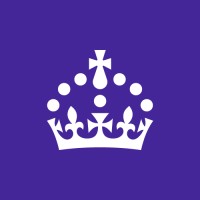
UK Home Office
At the Home Office, we help to ensure that the country is safe and secure. We’ve been looking after UK citizens since 1782. We are responsible for: - working on the problems caused by illegal drug use - shaping the alcohol strategy, policy and licensing conditions - keeping the United Kingdom safe
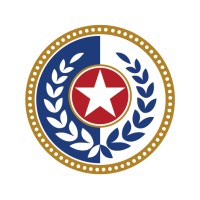
Texas Health and Human Services
Overview The Texas Health and Human Services Commission (HHSC) is an agency within the Texas Health and Human Services System. In September 2016, Texas began transforming how it delivers health and human services to qualified Texans, with a goal of making the Health and Human Services System more ef

CONICET
El Consejo Nacional de Investigaciones Científicas y Técnicas (CONICET) es el principal organismo dedicado a la promoción de la ciencia y la tecnología en la Argentina. Su actividad se desarrolla en cuatro grandes áreas: • Ciencias agrarias, ingeniería y de materiales • Ciencias biológica
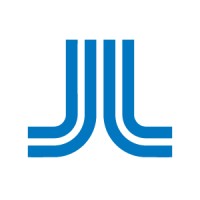
Region Stockholm
Är du beredd att tänka nytt och hitta framtidens lösningar? För vårt framtida uppdrag behöver vi medarbetare med hög kompetens, stort engagemang och som strävar efter ständig förbättring. Vid din sida kan du få engagerade kollegor inom hundratals kvalificerade yrken – ekonomer, sjuksköterskor, ju
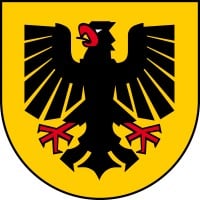
Stadt Dortmund
Willkommen in Dortmund - einer einzigartigen Stadt voller Perspektiven! Wie in unseren Stadtzielen beschrieben, gestalten wir Dortmund zu einer aufstrebenden Großstadt der Nachbarn mit attraktiven Leistungen für alle Einwohner*innen und Gäste. Hieran arbeiten wir mit der Expertise von unseren 11
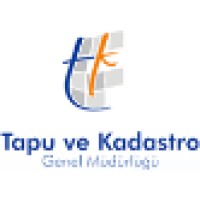
General Directorate of Land Registry and Cadastre
The General Directorate of Land Registry and Cadastre (Tapu ve Kadastro Genel Müdürlügü) refers to the legislation regarding land registry and Cadastre in Turkey. Duties of General Directorate of Land Registry and Cadastre TO KEEP AND UPDATE LAND REGISTRY AND CADASTRE DATA OF THE COUNTRY UNDER

Frequently Asked Questions
Explore insights on cybersecurity incidents, risk posture, and Rankiteo's assessments.
NA CyberSecurity History Information
How many cyber incidents has NA faced?
Total Incidents: According to Rankiteo, NA has faced 0 incidents in the past.
What types of cybersecurity incidents have occurred at NA?
Incident Types: The types of cybersecurity incidents that have occurred include .
Additional Questions
What Do We Measure?
















Every week, Rankiteo analyzes billions of signals to give organizations a sharper, faster view of emerging risks. With deeper, more actionable intelligence at their fingertips, security teams can outpace threat actors, respond instantly to Zero-Day attacks, and dramatically shrink their risk exposure window.
These are some of the factors we use to calculate the overall score:
Identify exposed access points, detect misconfigured SSL certificates, and uncover vulnerabilities across the network infrastructure.
Gain visibility into the software components used within an organization to detect vulnerabilities, manage risk, and ensure supply chain security.
Monitor and manage all IT assets and their configurations to ensure accurate, real-time visibility across the company's technology environment.
Leverage real-time insights on active threats, malware campaigns, and emerging vulnerabilities to proactively defend against evolving cyberattacks.




